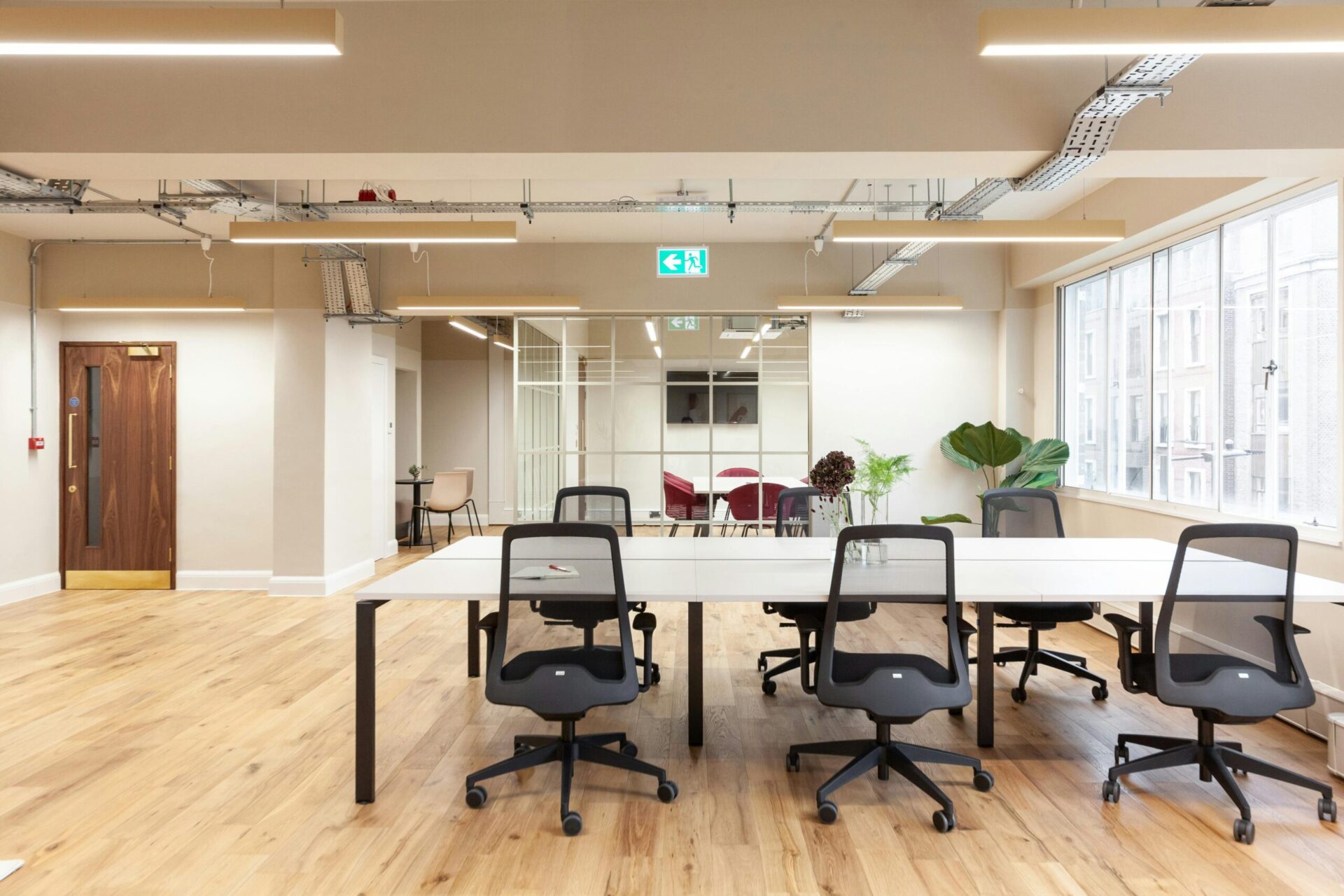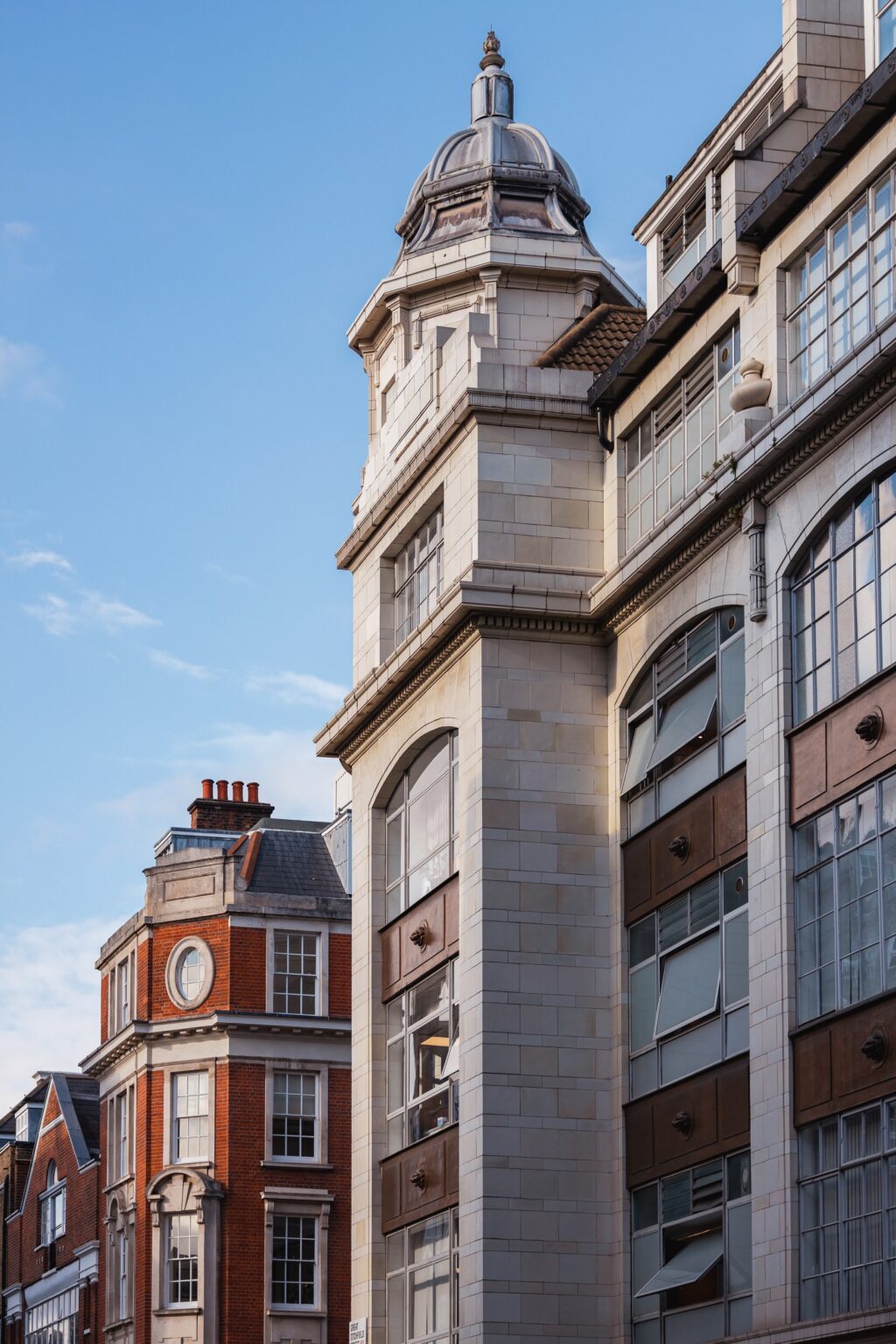How active office demand is evolving in Central London heading into 2026?

The Central London office market transformed significantly from 2020 to 2024 as remote and hybrid work reshaped space demand. Landlords adapted by upgrading prime buildings and repositioning outdated stock, creating a clear rent divide. By 2025, tenants started rethinking their footprints, lease terms, and workplace strategy, while developers focused on refurbishments over new builds.
As the market adjusts, the central question now is: what will active office demand look like in 2026? This article explores the evolution, key growth drivers, and the future outlook of Central London office space.
Market overview: 2024-2025 snapshot
The Central London office market is now in a stabilisation phase, following years of dramatic change. After the pandemic and shift towards hybrid working, the market has not collapsed, and neither has it returned to the pre-pandemic status quo (1). Instead, it has settled into a new rhythm.
In 2024, total take-up in Central London reached approximately 9.68 million sq ft, representing a 1% increase on 2023. The figure is slightly below long-term pre-pandemic averages. However, the fact that the occupier activity rose rather than fell shows that active office demand remains resilient.
Geographically, the activity is spread across markets such as the City of London core, the West End, and Midtown. Submarkets like Fitzrovia, Soho, and Marylebone also benefited from the shifts towards neighbourhood-driven office demand. The leasing volumes are still marginally below the pre-pandemic average, but enquiry levels remain high. For instance, at the end of H1 2025, active demand across Central London reached 13.7 million sq ft, about 50% above the long-term average.

Demand patterns
Office demand is now driven primarily by small to mid-sized businesses. These are occupiers seeking around 5,000 to 20,000 sq ft, rather than massive relocations. Firms in media, design, professional services, and tech lead the new lettings, attracted by characterful space and location rather than size.
Larger corporate occupiers continue to consolidate, though less aggressive in downsizing. A clear trend of ‘flight to quality’ also persists, where tenants prefer smaller but higher-spec, better-connected, and characterful spaces than holding on to large, outdated buildings. Meanwhile, refurbishments are gaining popularity as landlords choose to upgrade and reposition existing buildings rather than embark on speculative green-field developments (2).
The current statistics, and what stories are they telling
Industry data shows healthy signs of active demand in Central London. In 2024, take-up increased modestly with 1% to 9.68 million sq ft, with Grade A demand London contributing to 65% of total leasing activity. For Q4 2024, take-up hit around 3.17 million sq ft, marking a 15.5% QoQ. Meanwhile, active demand at the start of Q4 2024 was approximately 13.5 million sq ft, up around 44% on the long-term average.
Furthermore, nearly 48% of active occupiers at that time were seeking to increase space, compared to only 21% seeking to decrease. That tilt towards expansion indicates tenants are still looking to grow rather than contract their footprint. This is a critical insight when assessing how the West End office demand and broader London office market will evolve heading into 2026 (3).
Emerging drivers of change (heading into 2026)
As 2026 approaches, active office demand in Central London is being reshaped by a combination of macroeconomic realities, evolving work patterns, and deep-rooted cultural expectations. The following emerging trends reflect how tenant decision drivers are evolving.
From ‘flight to quality’ to ‘flight to character’
The established ‘flight to quality’ narrative has evolved into ‘flight to character’ as tenants are no longer drawn to glass towers or newly built offices. Instead, they pursue Grade A demand London stock that blends modern performance with authenticity. This mindset perfectly mirrors The Langham Estate’s philosophy of ‘quality through authenticity’, as reflected in its heritage portfolio across Fitzrovia.
Smaller, more decisive requirements
Enquiry levels across Central London point to shrinking average deal sizes, with the 5,000 – 15,000 sq ft driving the bulk of transactional activity. Agile creative offices, design studios, boutique financials, and advisory practices dominate new lettings. Meanwhile, global corporates are proceeding cautiously, consolidating rather than expanding. Decision timelines have also shortened dramatically. This shows how today’s tenants are informed, focused, and ready to rent spaces that align with their cost estimations and brand culture (4).
Sustainable and responsible refurbishment
Sustainability has transitioned from a mere ESG slogan into a core rental decision driver. Today’s landlords are under pressure to adapt and provide ESG-ready spaces. That is especially true as the Minimum Energy Efficiency Standards (MEES) tighten and the government demands all offices to achieve an EPC B rating by 2030 (5). As a result, tenants now seek upgraded, low-impact buildings that perform well on energy without compromising comfort.
Community & neighbourhood value
Another defining feature of London’s office evolution is the place rediscovery. Occupiers increasingly favour mixed-use, walkable London districts that offer lifestyle, social energy, and superior connectivity. This growth is being reinforced by the rise of community-led initiatives that promote cultural engagement.
Prime examples include the proximity between Fitzrovia, Soho, and Marylebone, which proves highly strategic for talent and amenities access. The Fitzrovia Quarter is also a great neighbourhood, cultivated by The Langham Estate through placemaking events like the FQ Wellness Festival and Artist’s Corner pop-up gallery (6).
The neighbourhood perspective: Fitzrovia & the West End
Fitzrovia and the wider West End create one neighbourhood where the evolving active office demand patterns are especially evident. These districts combine central London accessibility that appeals to creative, professional, and tech tenants looking for flexible floorplates and a human-centred environment.
In Fitzrovia, the vacancy rate has been reported at approximately 7.5%, indicating a relatively tight supply for good-quality stock. Rental prices in the area range from £25.45 to £88.50 per sq ft per year, depending on location, building age, and quality (7). Tenants also value buildings that prioritise daylight, materiality, wellness, and connectivity over mere floor area.
So, what to expect for 2026?
After two years of recalibration, Central London’s office market indicates steady recovery, quality-led demand, and disciplined leasing behaviour. For instance, in Q2 2025, take-up across Central London reached about 2.55 million sq ft, around a 10% increase on the previous quarter. The activity may still be below long-term pre-pandemic averages. However, it suggests steady rather than speculative leasing.
Out of that, approximately 80% of take-up was in Grade A demand London, confirming that quality-led demand now defines the market. Moreover, occupiers taking sub-10,000 sq ft deals drove more than 55% of transactions in the West End during 2025. This shows that smaller, design-aware businesses are keeping the market active. Meanwhile, decision timelines are shortening as brands act quickly when they spot spaces that align with their business culture and convenience.
On the supply side, vacancy pressure remains asymmetric. Prime West End buildings’ vacancy remains under 2%, while older inefficient stock still carries availability above 10%. Expect prime rents to hold within the £165–£170 per sq ft range, and incentives to tighten further in turnkey, Grade A refurbished space.
Neighbourhood value will continue to be among the tenant decision drivers. For instance, demand will cluster in districts offering walkability, authenticity, and lifestyle convenience. Footfall data for the West End indicates that weekday pedestrian counts are up 19% YoY in 2025. This is a sign of renewed worker presence and the location’s attractiveness. ESG regulation will also shape leasing intent, meaning that assets unable to upgrade and meet EPC compliance will become less competitive.


How to choose a space that reflects who you are?
Choosing the right office space is more than size or specification. It is about finding a space that mirrors your brand’s identity and values. As a discerning occupier, seek environments that balance stability, character, and human connection. These places inspire creativity, foster collaboration, and communicate trust to clients and employees alike.
Heritage-led spaces within walkable London districts are also ideal if you value authenticity and community as much as performance. A prime example of this philosophy can be found within The Langham Estate, whose curated portfolio blends timeless architecture, modern efficiency, and a deep commitment to neighbourhood vitality. Partner with the team today to find a place that reflects who you are and where your business is headed.
Reference list:
(1) What’s behind the surge of leasing London office spaces for collaboration?
(2) Benefits of leasing the refurbished buildings in Central London
(3) What’s ahead for Central London office market (Q3 2025)
(4) The true cost of shop rental in London, by area & size
(5) EPC ratings – Avoid fines when leasing older office spaces in Fitzrovia
(6) Wellness takes centre stage in Fitzrovia Quarter
(7) Fitzrovia’s office rental price trends 2025: comparison with Mayfair & Soho